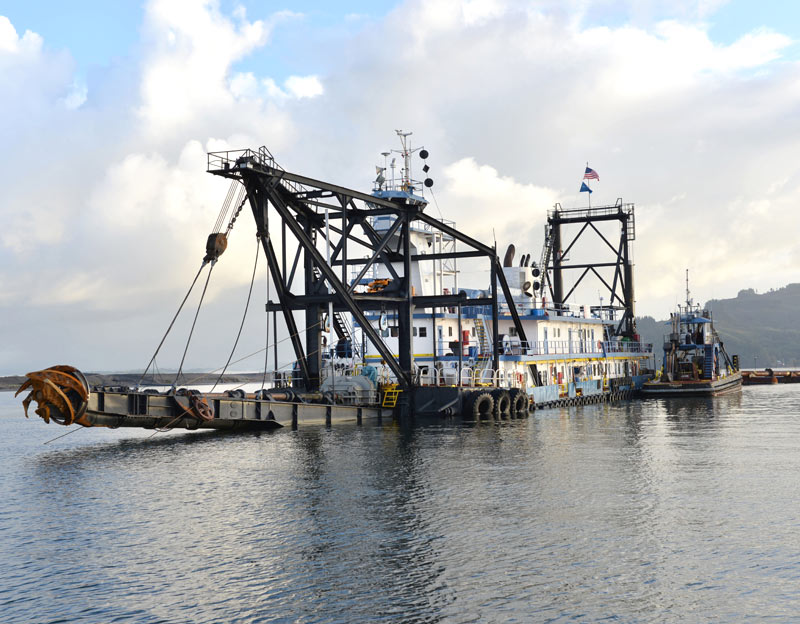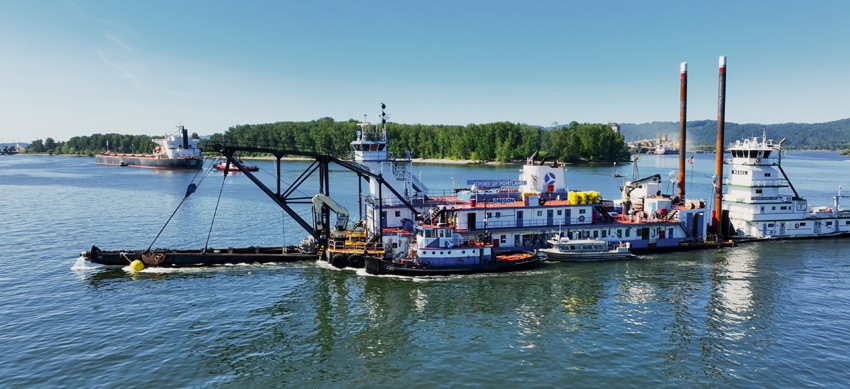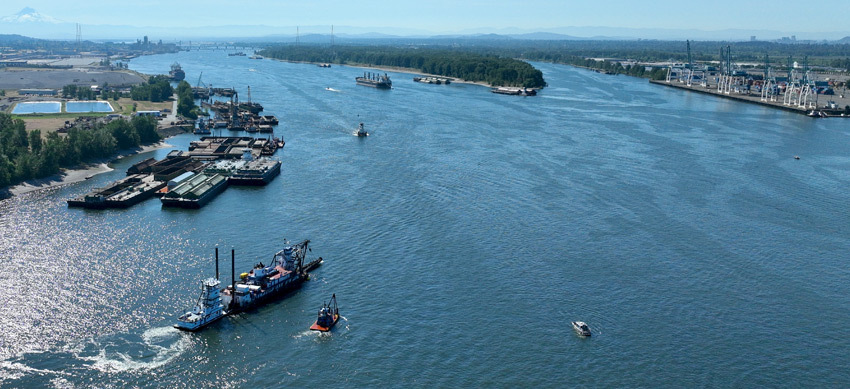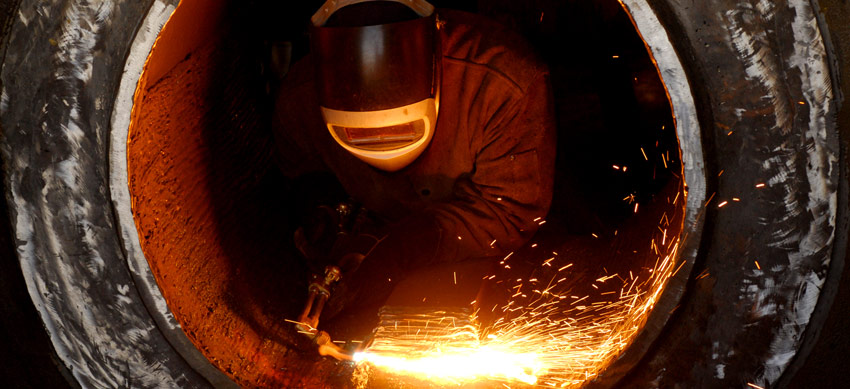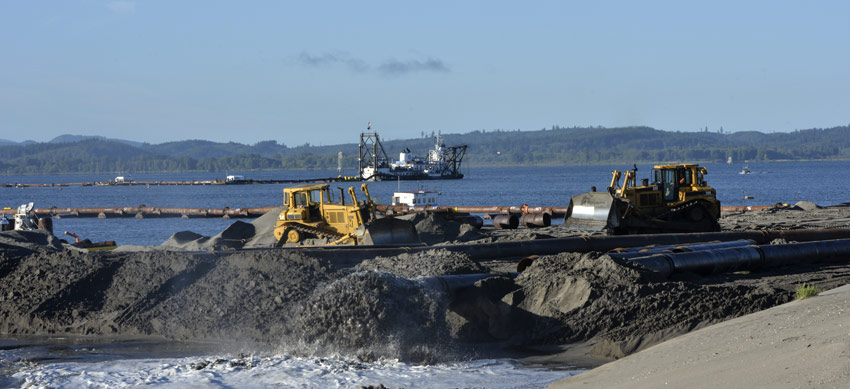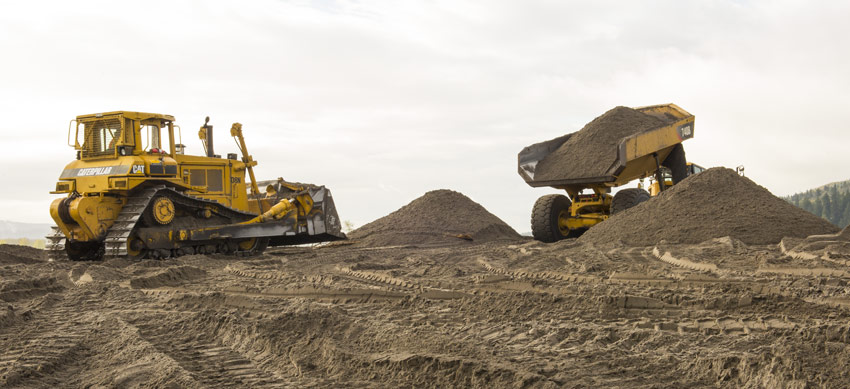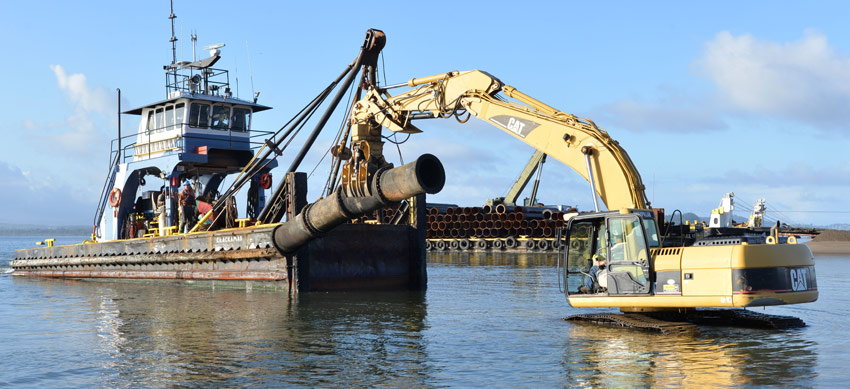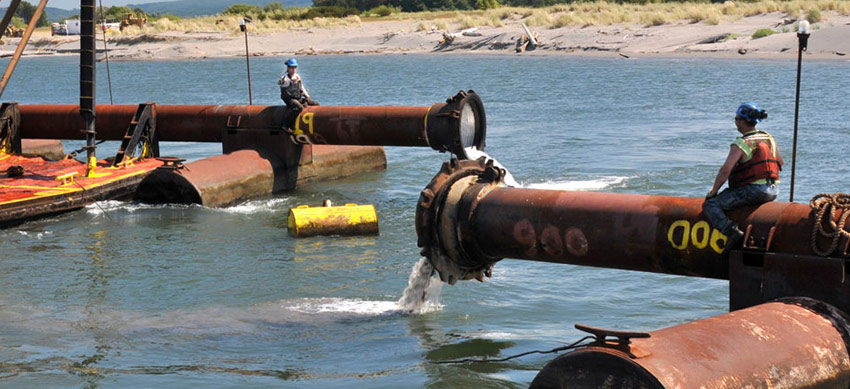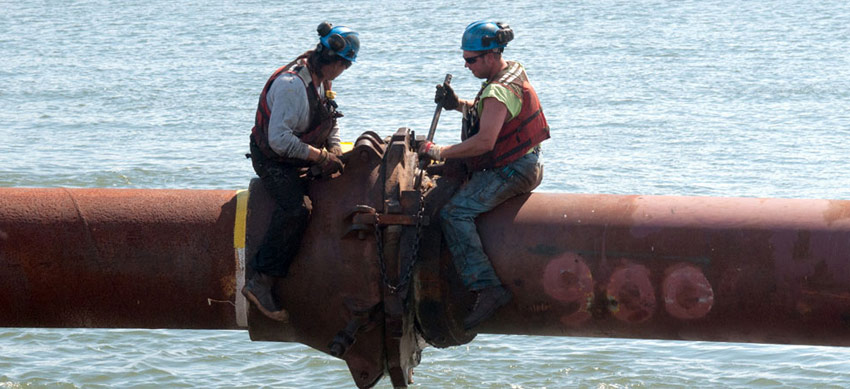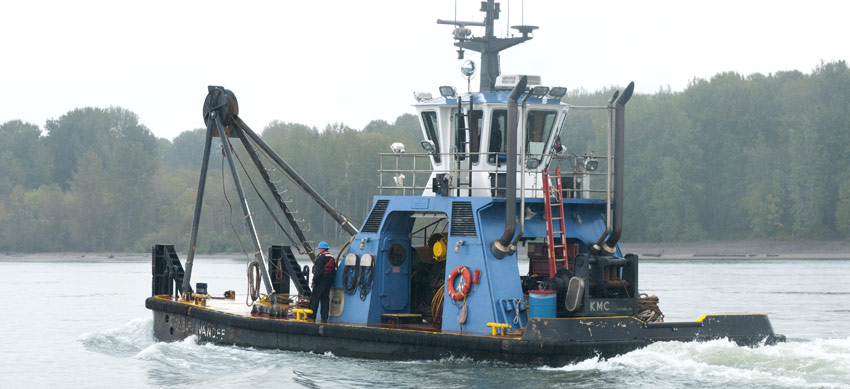to keep commerce moving.
Our marine highways play an important role in Oregon's economic health, creating jobs and ensuring ships can carry goods to and from our region. From the Pacific Ocean to Portland, the Dredge Oregon keeps the shipping channel deep and wide enough for ships, barges, tugs, and other vessels to travel safely and efficiently – to Portland, and beyond.
Navigation
The Columbia River navigation channel begins where the river meets the Pacific Ocean. The Dredge Oregon maintains the channel for 100 miles, starting near Astoria and continuing all the way to the Portland Harbor on the Willamette River.
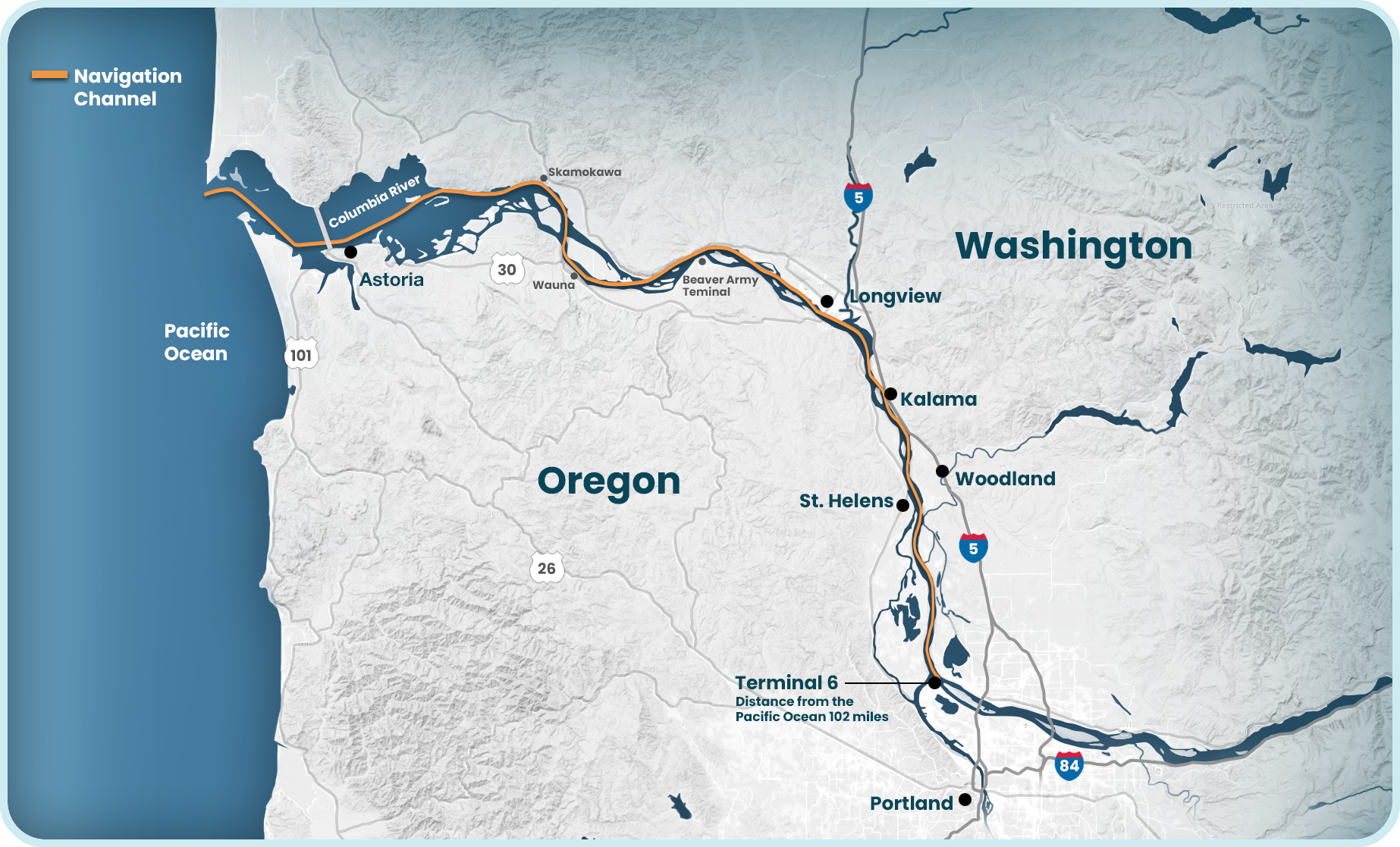
The region’s gateway for international trade
Local businesses across the Northwest rely on marine shipping to get their products to global markets.
The Dredge Oregon and its crew are critical to the economic success of the entire network of 36 ports in the Columbia-Snake River system.
The Dredge Oregon
Each year, the Dredge Oregon removes well over a million cubic yards of material – mostly sand and gravel – built up along the bottom of the navigation channel, restoring it to 43 feet deep and 600 feet wide.
This ensures oceangoing vessels can carry goods to and from our region – everything from imported tires, building supplies, consumer electronics, cars, and toys, to exported wheat, produce, seafood, lumber, hay, and sneakers.
How it works
Known as a cutter suction dredge, the Dredge Oregon functions like a massive canister vacuum. The dredge uses a rotating cutter head – essentially a giant egg beater – to stir up and loosen material along the river bottom.
The sand is then sucked up into a 30-inch-diameter pipe and funneled up to 2 miles away to its final destination, whether it’s placed elsewhere in the river, or used to build up islands or replenish eroded beaches.

Our crew
Whether a captain or deckhand, or any of the oilers, electricians, boat and heavy-machinery operators, more than 40 people work on the Dredge Oregon, with some jobs out on the water and other positions on shore.
During the annual dredging season (from late spring to late fall), the vessel operates 24 hours a day, six days a week.
Shaping the economy – and our geography
Over the years, dredging has not only shaped the river bottom to accommodate increasingly large cargo ships. It’s also shaped the region’s economy, and even our geography – with dredged materials being used as fill to develop iconic places like Swan Island, Oaks Park, a Multnomah Falls parking lot, PDX, and even the Nike campus.
Dredging through the years
Without dredging the shipping channel, we would be a very different and much smaller city.
Early city and state leaders recognized the importance of transportation infrastructure in the Portland Harbor. They established the Port of Portland in 1891 for the express purpose of dredging the navigation channel from Portland to the sea.
They also made investments in roads, railways, and runways that positioned the city of Portland as an international trade hub. By the mid-1920s, Portland had become the region's gateway for the export of wheat, lumber, wool, and manufactured goods.
Timeline
Portland Mayor Henry Failing authorizes the city’s purchase of its first dredge . The city begins efforts to dredge the Willamette River. The river’s average depth at the time is 12 feet.
The U.S. Army Corps of Engineers establishes an office in Portland and four years later dredges the navigation channel on the Willamette and Columbia rivers to a depth of 17 feet.
Senator Henry Corbett successfully lobbies for federal funding for dredging projects and a trans-continental railroad line, helping launch Portland as a serious seaport.
The Oregon Legislature establishes the Port of Portland to construct and maintain a 25-foot channel in the Willamette and Columbia rivers. It is the second port authority on the West Coast, after San Francisco.
The City of Portland creates the Commission of Public Docks to develop maritime commerce. Four years later Terminal 1, the first municipal dock, opens. The commission eventually operates four waterfront terminals.
The Port of Portland acquires Swan Island, considered a key site for the development of the inner harbor. Six years later the Port opens the city’s first commercial airport there on a site created with dredged material from the Willamette River.
Needing a larger facility to accommodate ever-increasing sizes of passenger and cargo aircraft, the Port of Portland opens the Portland-Columbia Airport, later renamed Portland International Airport. The facility sits on land created from dredged material.
The Oregon Legislature consolidates the Port of Portland, a public corporation, and the Commission of Public Docks, a city agency.
The eruption of Mount St. Helens results in one of the largest dredging efforts ever in the region. The Port of Portland, U.S. Army Corps of Engineers, and private companies work nonstop to clear the navigation channel—removing enough debris to cover a football field to a height of nearly 7 miles.
Construction of the current depth of the Columbia River navigation channel, 43 feet, is completed. The Willamette River channel remains at 40 feet.
In 2014, the Port replaces three engines on the dredge, reducing diesel particulate emissions by more than 85 percent.
In 2024, the Port upgrades the dredge’s spud system for safety and efficiency, and welds on a new stern to support the new spud system and replace aging steel.
